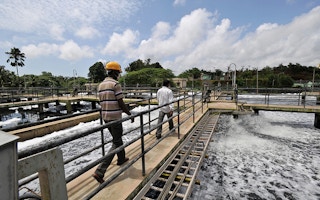India is home to the highest number of rural people without access to clean water, and faces increased strain on scarce resources due to a rising population and climate change among other factors, a development charity said on Tuesday.
WaterAid said over 63 million rural Indians - the equivalent of the population of Britain - do not have clean water to drink, cook or wash with, largely due to remote locations, weak infrastructure and poor planning.
China ranked second with almost 44 million rural people without clean water in WaterAid’s report. Nigeria and Ethiopia were in third place - each with more than 40 million rural people without safe water, according to the study released ahead of World Water Day on March 22.
“A majority of these people come from poor rural communities and any significant variation in the climate only worsens their daily struggle to access clean water,” V.K. Madhavan, WaterAid India’s Chief Executive, said in a statement.
“With 27 out of the 35 states and union territories in India disaster prone, the poorest and the most marginalised across the country will bear the brunt of extreme weather events and climate change and will find it the hardest to adapt.”
“
A majority of these people come from poor rural communities and any significant variation in the climate only worsens their daily struggle to access clean water.
V.K. Madhavan, chief executive, WaterAid India
Around 663 million people globally are without clean water, with almost 80 per cent - 522 million - living in rural areas, WaterAid said.
Many are in countries that are already highly vulnerable to extreme weather such as cyclones, floods and droughts. The rise in climate-linked extreme weather events is likely not only worsen their plight, but also leave millions more water insecure, it said.
Diseases such as cholera, blinding trachoma, malaria and dengue are expected to become more common and malnutrition more prevalent. Rural farming communities will struggle to grow food and feed livestock amid soaring temperatures.
Despite being one of the world’s fastest growing economies, India ranks amongst countries that are most vulnerable to climate change, yet least ready to adapt, according to the Notre Dame Global Adaptation Index.
Prime Minister Narendra Modi’s government has prioritised sanitation since sweeping to power in 2014 - launching a “Clean India” campaign which aims to provide toilets for all and end open defecation in the country by 2019.
But the task is mammoth.
Around 76 million Indians need improved water sources and 770 million require proper toilets, WaterAid said. As a result, 68,000 children under five die annually due to diarrhoeal diseases caused by unsafe water and poor sanitation, it added.
This story was published with permission from Thomson Reuters Foundation, the charitable arm of Thomson Reuters, that covers humanitarian news, women’s rights, trafficking, property rights, climate change and resilience. Visit http://news.trust.org.










